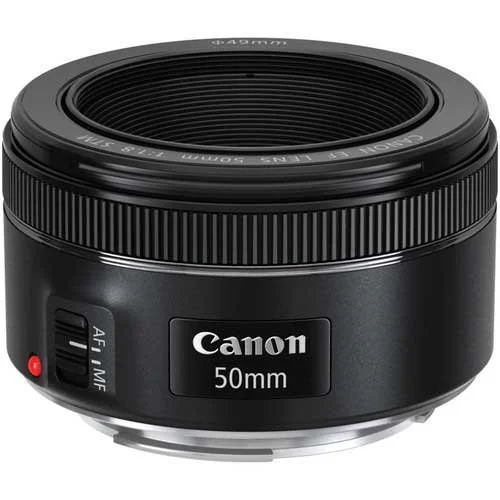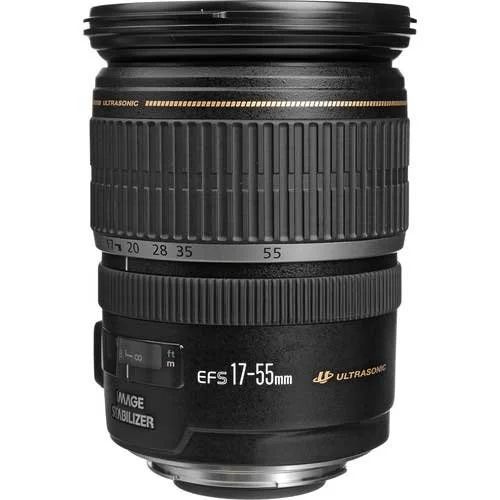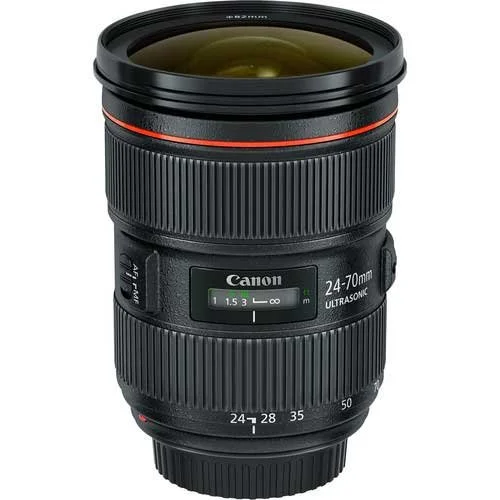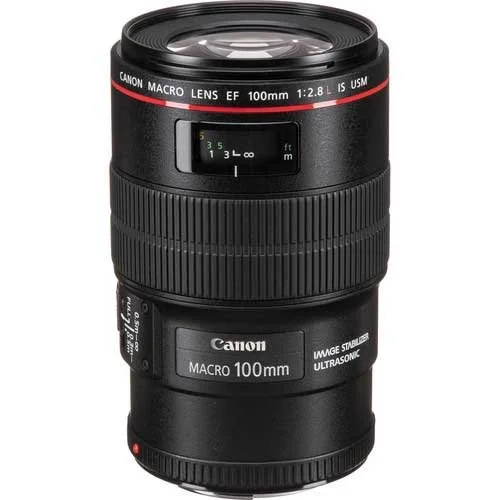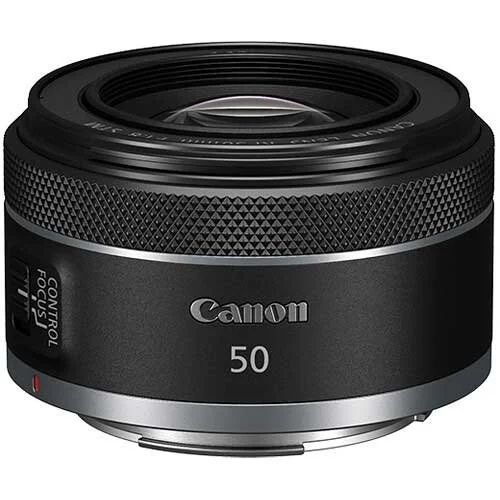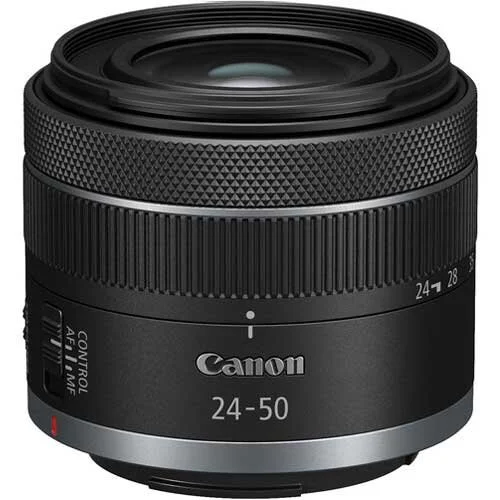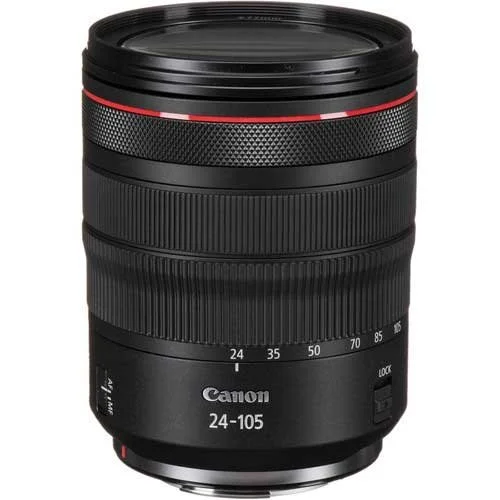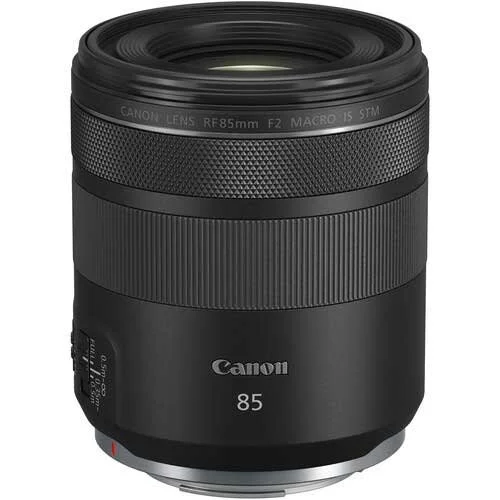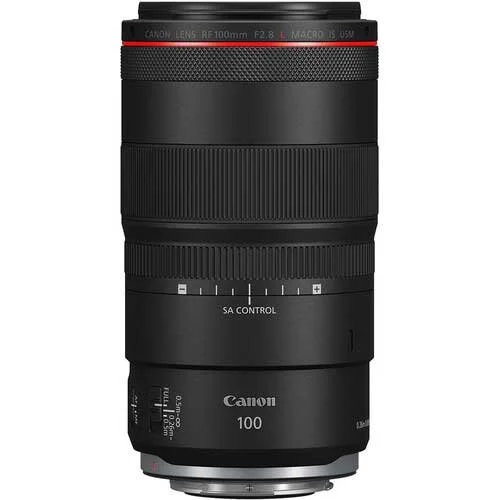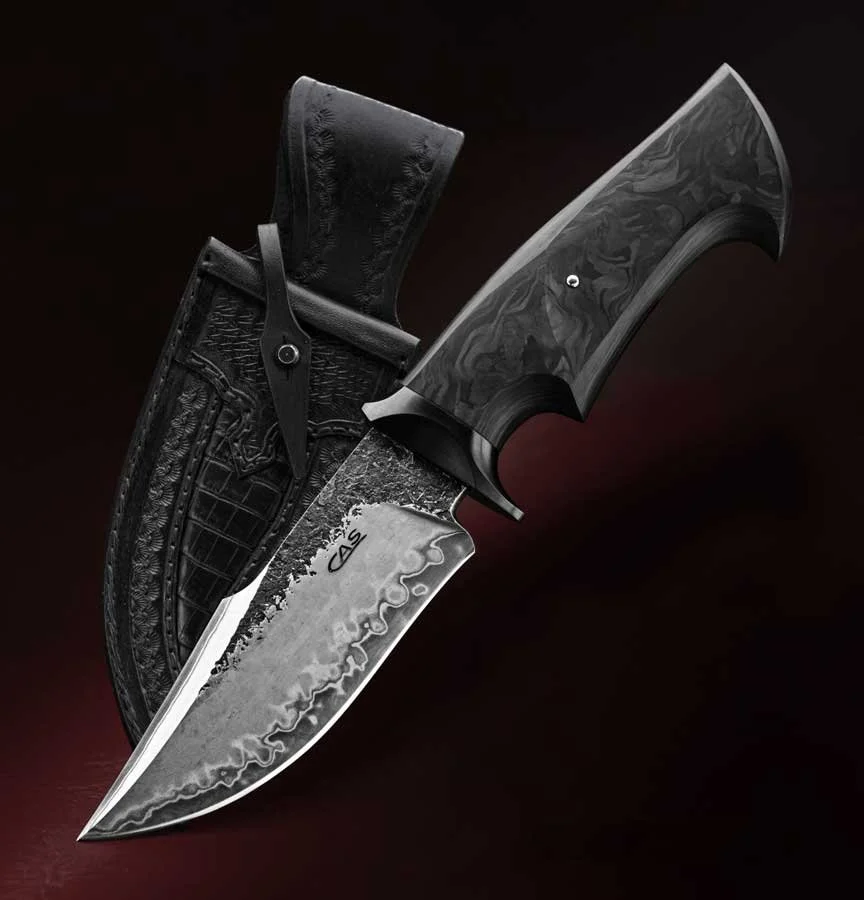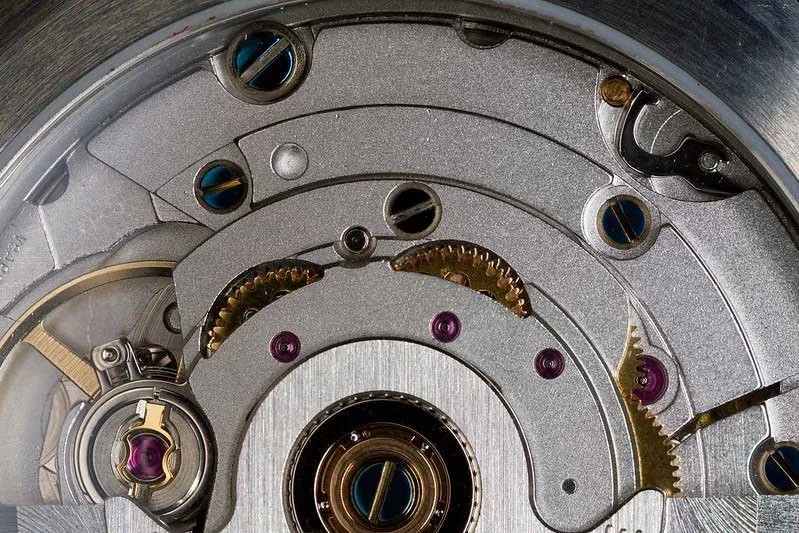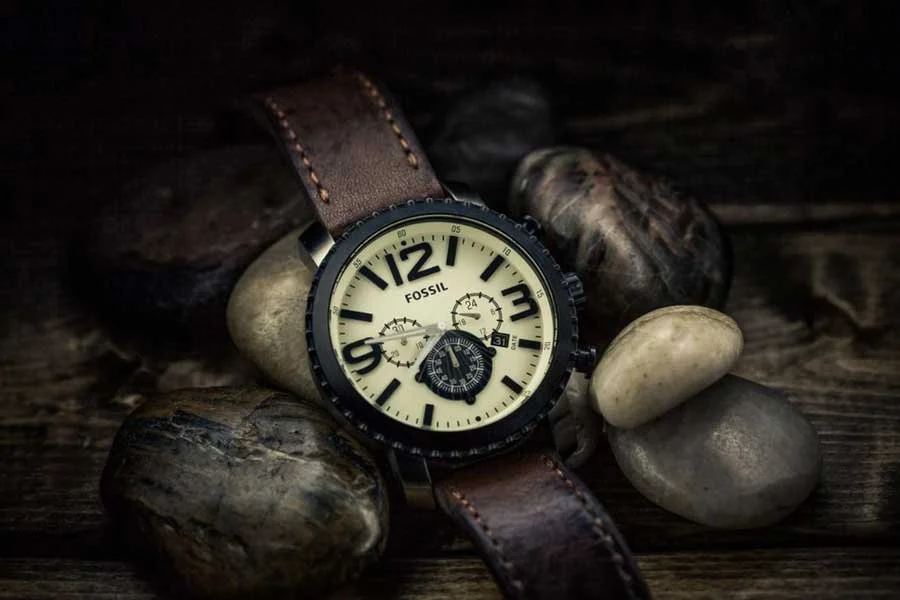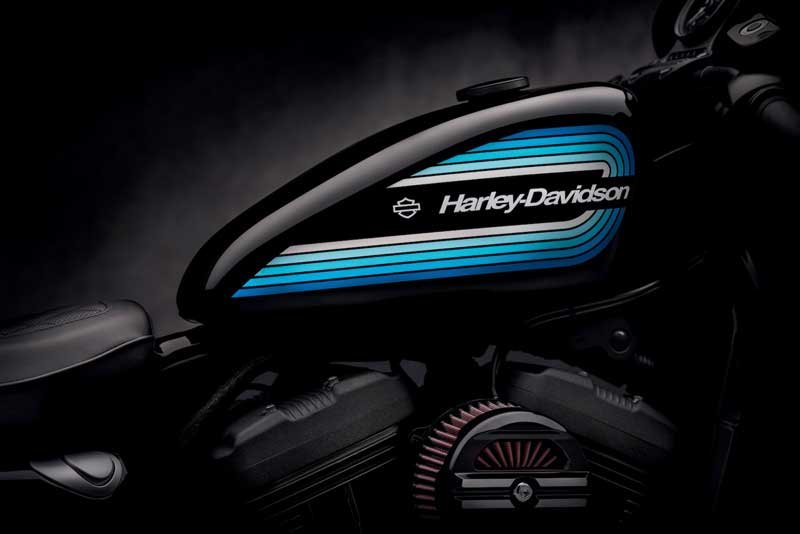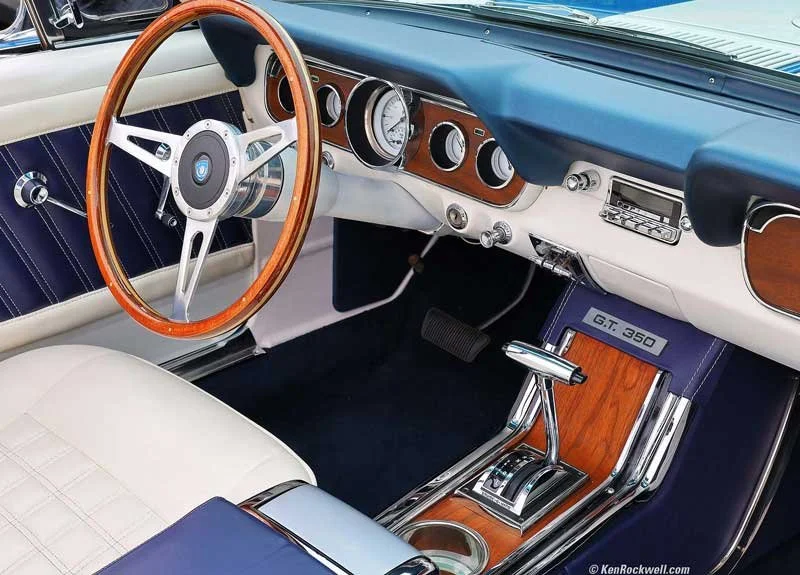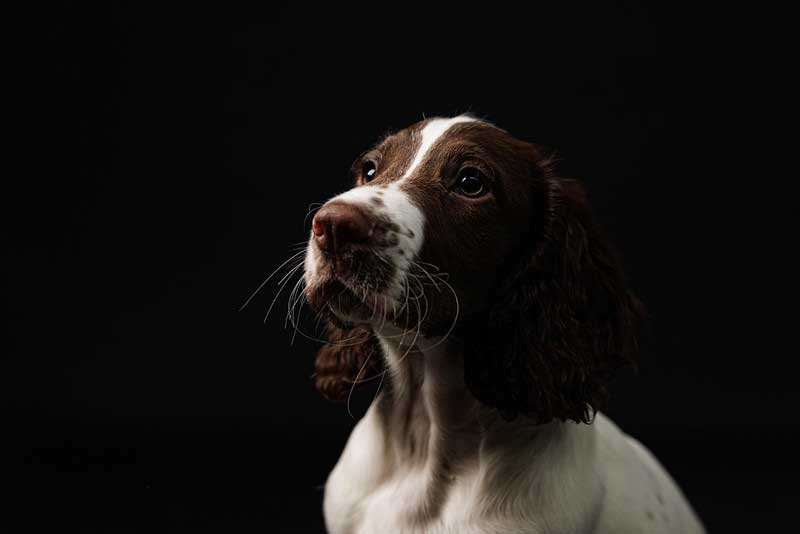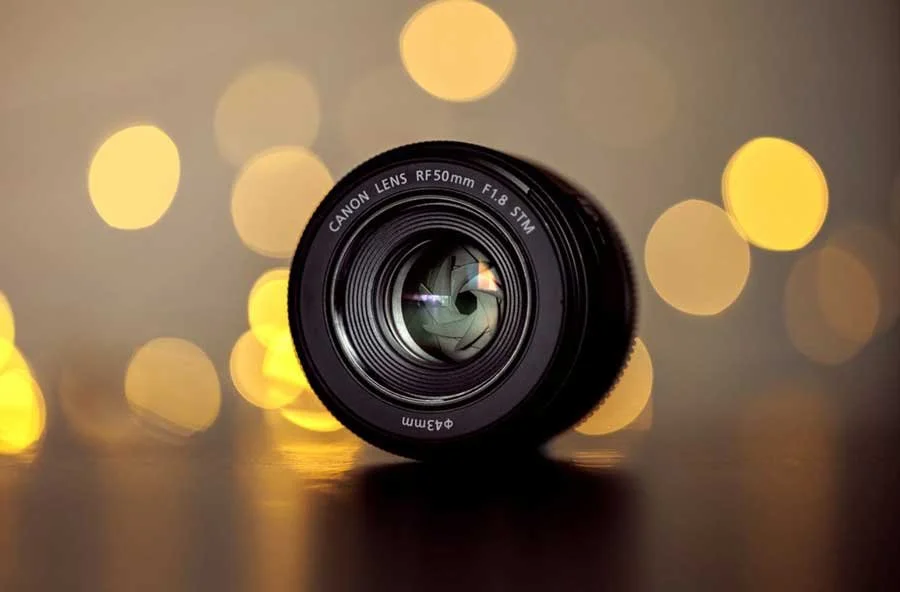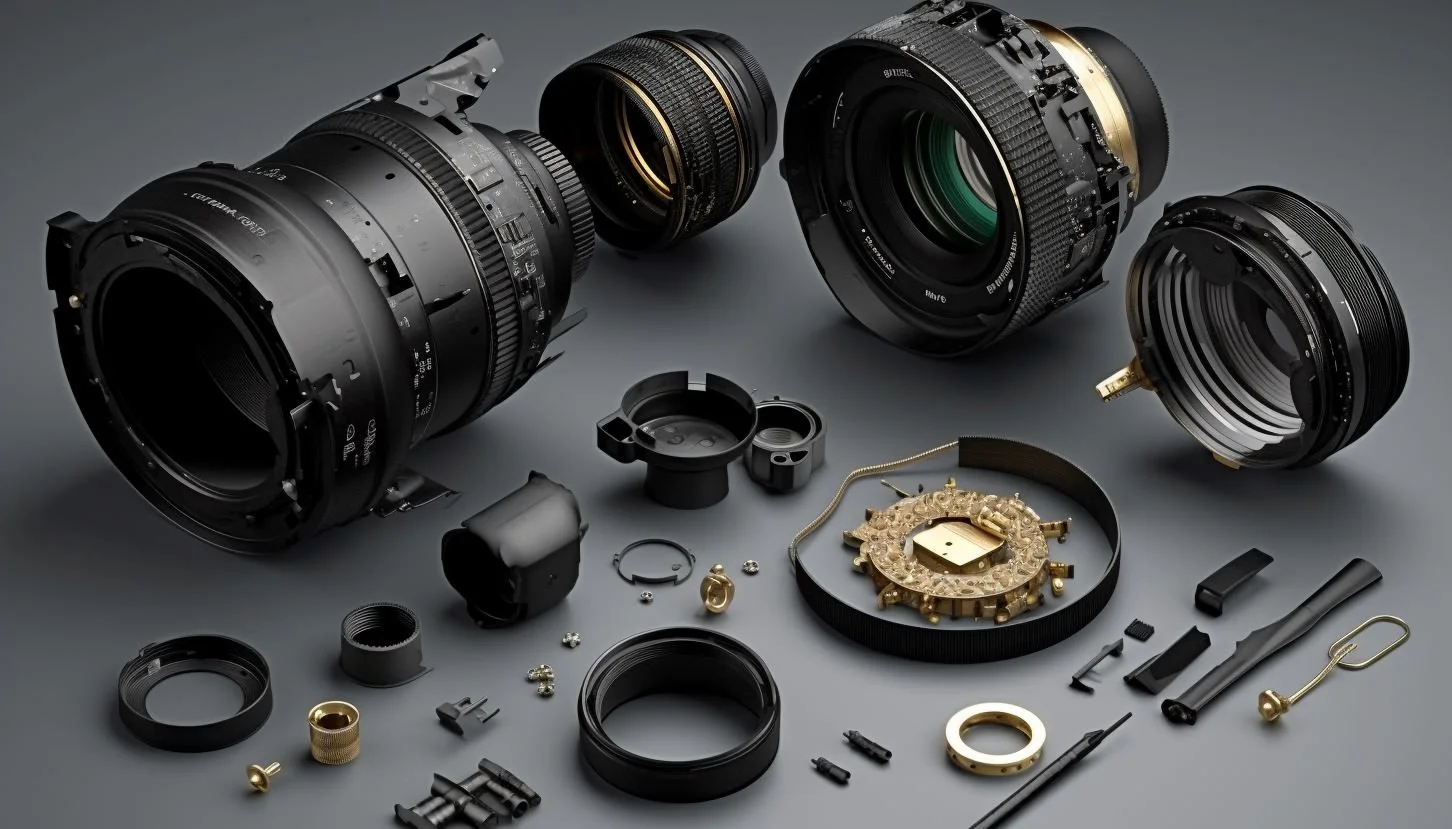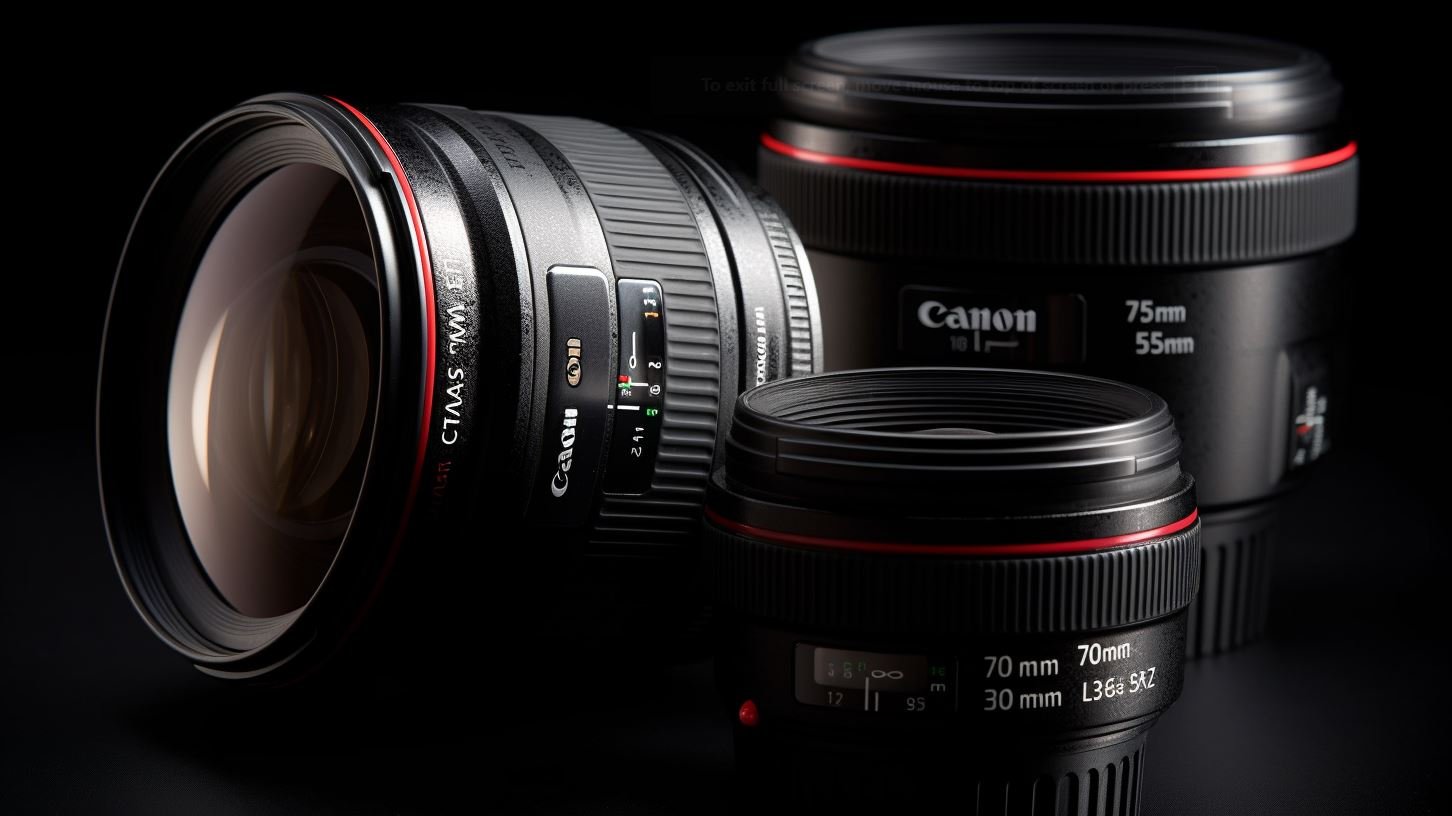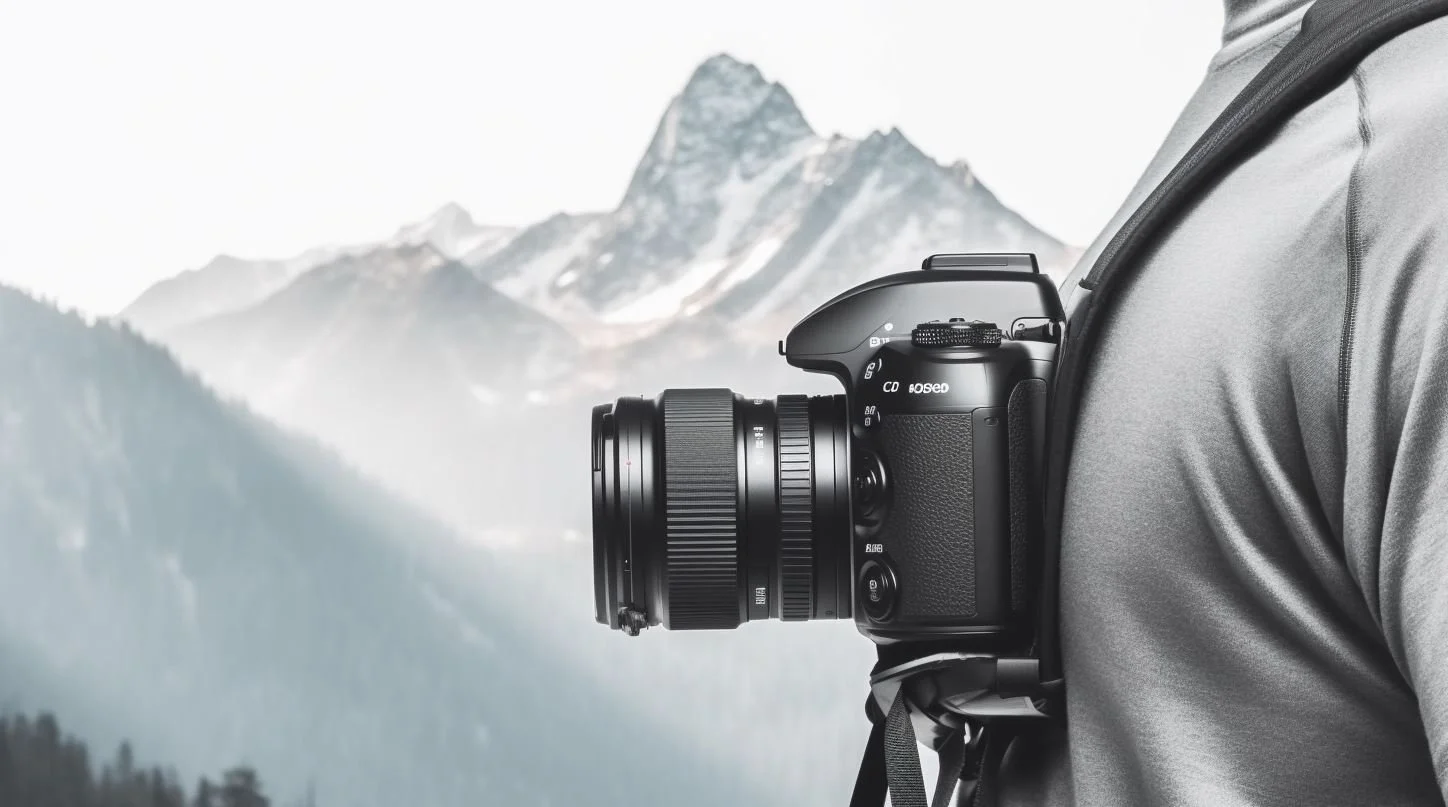Best Canon Lens for Product Photography
Unlocking Visual Excellence: A Comprehensive Guide to Canon Lenses for Product Photography
In the demanding field of product photography, the choice of lens can significantly impact the quality of your work.
Whether you're a seasoned professional or just starting out, selecting the right lens is crucial for capturing sharp, detailed, and aesthetically pleasing images that do justice to the products you're showcasing.
As the lens market offers a plethora of options, making an informed decision can be overwhelming. To aid in your selection process, this comprehensive blog post provides an in-depth analysis of 12 exceptional Canon lenses, tailored for both EF and RF mount systems.
The lenses featured here have been carefully evaluated based on their optical performance, versatility, and feature sets, among other criteria.
Each recommendation is accompanied by a detailed review and sample images, offering you a complete understanding of what to expect.
To further assist you in making an educated purchase, this post includes a buyer's guide that delves into all the crucial features you should consider—such as aperture size, focal length, and sharpness—when choosing a lens for product photography.
By the end of this article, you will be equipped with the knowledge and insights needed to make a well-informed choice, enhancing both your photographic toolkit and your skills in capturing compelling product images.
Disclaimer: This blog post contains affiliate links. If you make a purchase through one of these links, we may receive a small commission at no additional cost to you. This helps support our work and allows us to continue providing valuable content. Thank you for your support!
How To Choose A Product Photography Lens
Determine Your Needs:
Before shopping, identify the types of products you'll be photographing. This will guide your choice of focal length and other features.
Focal Length:
Standard Lenses (35-70mm): Suitable for general-purpose product photography, create images that appear natural to the human eye.
Macro Lenses (90-105mm): Ideal for detailed, close-up shots of smaller items.
Aperture:
Look for lenses with a wide maximum aperture (e.g., f/1.8 or f/2.8) for more control over depth of field.
Sharpness and Optical Quality:
Opt for lenses with superior optical elements and coatings that minimize aberrations and improve image quality.
Autofocus vs. Manual Focus:
Autofocus is convenient but manual focus gives you more control. Most lenses offer both.
Compatibility:
Ensure your selected lens is compatible with the lens mount of your camera.
Cost and Budget:
Quality lenses are an investment. Balance your specific needs with your budget constraints.
Quick Links:
35-70mm SLR Canon Lenses (EF-Mount):
Best Budget: Canon EF 50mm f/1.8 STM Lens - An excellent budget-friendly choice for product photographers prioritizing optical quality and focus speed. While its construction is mostly plastic and it lacks weather sealing, its sharpness, fast aperture, and reliable autofocus make it a valuable asset for those on a budget.
Best Value: Canon EF-S 17-55mm f/2.8 IS USM Lens - Aimed at users of Canon's APS-C system, this lens offers a versatile zoom range and fast aperture. It is a well-rounded but expensive option ideal for product photography.
Best Overall: Canon EF 24-70mm f/2.8L II USM Lens - Targeted at professionals, this lens offers a versatile zoom range, quick and accurate autofocus, and exceptional optical quality. Despite its high cost, the lens is an investment that meets the requirements of serious photographers.
Macro SLR Canon Lenses (EF-Mount):
Most Affordable: Canon MP-E 65mm f/2.8 1-5x Macro Photo Lens - A highly specialized lens designed for extreme macro photography, suitable for scientific research or detailed product photography. It is not recommended for general photography due to its manual focus mechanism and limited working distance. The lens requires a high level of expertise and specialized equipment.
Longer Reach: Canon EF 100mm f/2.8L Macro IS USM Lens - Suited for those who require both macro and telephoto work, this lens offers reliable performance, image stabilization, and improved autofocus. It's a versatile macro lens option.
Best Overall: Canon TS-E 90mm f/2.8L Macro Tilt-Shift Lens - This lens offers specialized features like tilt-shift, making it useful for controlling perspective and focus planes, ensuring more or all of your product will be in focus in comparison to non-tilt-shift lenses. Despite its manual focusing requirement and specialized nature, it offers professional-grade build quality and high optical performance.
35-70mm Mirrorless Canon Lenses (RF-Mount):
Best Budget: Canon RF 50mm f/1.8 STM Lens - An affordable yet high-performing standard lens for Canon's RF system. While the build quality may not match higher-end models, its optical performance is commendable, making it a suitable choice for those on a budget.
Affordable Zoom: Canon RF 24-50mm f/4.5-6.3 IS STM Lens - Offers a good balance of performance and affordability, making it a versatile option for a wide array of applications. Its build quality and aperture size may be limitations for some users, but its overall feature set is attractive for those prioritizing portability and cost-effectiveness.
Best Value: Canon RF 24-105mm f/4 L IS USM Lens - A top-tier standard zoom option for Canon's RF system, offering a balance of optical performance, versatility, and professional features. While its size, weight, and cost might deter some, its overall capabilities make it a recommended option for those willing to make the investment.
Best Overall: Canon RF 24-70mm f/2.8 L IS USM Lens - A professional-grade zoom lens that offers fast and accurate autofocus, a versatile focal length, and a constant f/2.8 aperture. Its weight and size may be considerations for some users, but its optical performance and robust construction make it one of the best overall options for Canon's RF mount system.
Macro Mirrorless Canon Lenses (RF-Mount):
Best Value: Canon RF 85mm f/2 Macro IS STM Lens - This lens offers an attractive blend of sharpness, speed, and versatility at a competitive price point. Its macro capabilities make it useful for capturing intricate details, making it a strong value option for product photographers.
Best Overall: Canon RF 100mm f/2.8 L Macro IS USM Lens - Designed for those requiring high levels of performance and versatility in product photography, this lens offers superb optical performance, fast autofocus, and additional features like SA Control. Although it's on the higher end price-wise, its range of features and exceptional performance justify the investment for professionals. This is one of the best lenses ever released for product photographers.
Best Canon Lens for Product Photography
Choose your lens mount from the list below. Standard lenses are 35-70mm.
Standard EF Canon Lenses
(sorted by price from ↓↑)
Best Budget
Budget-friendly with premium optical performance. Ideal for product photography.
| Format | Full-Frame |
| Mount | Canon EF |
| Aperture | f/1.8 |
| Minimum Focus Distance | 13.78" / 35 cm |
| Maximum Magnification | 0.21x |
Best Value
Canon EF-S 17-55mm f/2.8 IS USM
Versatile zoom and fast aperture for APS-C systems. Tailored for product photography.
| Format | APS-C |
| Mount | Canon EF-S |
| Aperture | f/2.8 |
| Minimum Focus Distance | 1.15' / 35 cm |
| Maximum Magnification | 0.17x |
Best Overall
Canon EF 24-70mm f/2.8L II USM
Professional-grade performance and versatility. A reliable choice for serious photographers.
| Format | Full-Frame |
| Mount | Canon EF |
| Aperture | f/2.8 |
| Minimum Focus Distance | 1.25' / 38 cm |
| Maximum Magnification | 0.21x |
Macro EF Canon Lenses
(sorted by price from ↓↑)
Most Affordable
Canon MP-E 65mm f/2.8 1-5x Macro
Specialized for extreme macro photography. Great for scientific/medical instruments and product detail shots.
| Format | Full-Frame |
| Mount | Canon EF |
| Aperture | f/2.8 |
| Minimum Focus Distance | 9.45" / 24 cm |
| Maximum Magnification | 5x |
Longer Reach
Canon EF 100mm f/2.8L Macro IS USM
Dual-purpose lens for macro and telephoto work. Versatile and reliable.
| Format | Full-Frame |
| Mount | Canon EF |
| Aperture | f/2.8 |
| Minimum Focus Distance | 11.81" / 30 cm |
| Maximum Magnification | 1x |
Best Overall
Canon TS-E 90mm f/2.8L Macro Tilt-Shift
Creative control with tilt-shift capabilities. The ultimate focus plain tool for product photography.
| Format | Full-Frame |
| Mount | Canon EF |
| Aperture | f/2.8 |
| Minimum Focus Distance | 1.28' / 39 cm |
| Maximum Magnification | 0.5x |
Standard RF Canon Lenses
(sorted by price from ↓↑)
Best Budget
Affordable standard lens with commendable optical performance. A budget-friendly choice for RF systems.
| Format | Full-Frame |
| Mount | Canon RF |
| Aperture | f/1.8 |
| Minimum Focus Distance | 11.8" / 30 cm |
| Maximum Magnification | 0.25x |
Affordable Zoom
Canon RF 24-50mm f/4.5-6.3 IS STM
Lightweight and versatile. Ideal for photographers prioritizing portability and cost.
| Format | Full-Frame |
| Mount | Canon RF |
| Aperture | f/4.5 to 6.3 |
| Minimum Focus Distance | 11.8" / 30 cm |
| Maximum Magnification | 0.11x (24mm) 0.19x (50mm) |
Best Value
Canon RF 24-105mm f/4 L IS USM
All-in-one solution with professional-grade features. A smart investment for diversified photography needs.
| Format | Full-Frame |
| Mount | Canon RF |
| Aperture | f/4 |
| Minimum Focus Distance | 1.48' / 45 cm |
| Maximum Magnification | 0.24x |
Best Overall
Canon RF 24-70mm f/2.8 L IS USM
High-performance mid-range zoom. A premier choice for EOS-R system photographers.
| Format | Full-Frame |
| Mount | Canon RF |
| Aperture | f/2.8 |
| Minimum Focus Distance | 8.27" / 21 cm |
| Maximum Magnification | 0.3x |
Macro RF Canon Lenses
(sorted by price from ↓↑)
Best Value
Canon RF 85mm f/2 Macro IS STM
Ideal for product photography with its sharpness and macro capabilities. Versatile and competitively priced.
| Format | Full-Frame |
| Mount | Canon RF |
| Aperture | f/2 |
| Minimum Focus Distance | 1.15' / 35.05 cm |
| Maximum Magnification | 0.5x |
Best Overall
Canon RF 100mm f/2.8 L Macro IS USM
Professional-grade macro with incredible optics. One of the best product photography lenses ever developed.
| Format | Full-Frame |
| Mount | Canon RF |
| Aperture | f/2.8 |
| Minimum Focus Distance | 10.2" / 26 cm |
| Maximum Magnification | 1.4x |
Reviews
Canon EF 50mm f/1.8 STM
Overall Performance
The Canon EF 50mm f/1.8 STM lens offers impressive optical performance.
Its optics are identical to its predecessor, the EF 50mm f/1.8 II, which in turn had upgraded its multicoating from the original EF 50mm f/1.8 lens from 1987.
This lineage ensures a high level of optical quality.
Sharpness
Sharpness is a primary concern for many photographers, and the Canon EF 50mm f/1.8 STM excels in this regard.
The lens delivers ultra-sharp images at all apertures in the center of the frame.
However, at f/1.8, the lens shows a little less contrast due to spherical aberration.
Full-frame corners may appear slightly softer at f/1.8 due to coma, but this improves by f/2.8, becomes excellent at f/4, and reaches optimal performance by f/8.
Aperture
With a maximum aperture of f/1.8, the lens allows for excellent low-light performance and depth-of-field control. This makes it suitable for achieving a blurred background or 'bokeh' effect, which is often desired in product photography for isolating the subject.
Bokeh
Bokeh quality is another aspect to consider, especially for product photographers who aim for a softer, blurred background to make their subject stand out. The lens provides good and neutral bokeh, which is a strong point for those who need this aesthetic in their product shots.
Autofocus vs. Manual Focus
The lens features fast and nearly silent autofocus, thanks to Canon's STM focus motor.
Autofocus performance is consistent and accurate, particularly at f/1.8 where focus precision is crucial.
For those who prefer manual focus, the lens also allows for easy manual focus override.
However, the manual focus is motor-driven and will require the camera's meter to be active.
Build Quality
Though optically strong, the Canon EF 50mm f/1.8 STM is predominantly made of plastic, except for the glass elements and the mount.
This includes plastic filter threads and hood mount, a focus ring with a rubber-like texture, and an internal structure that appears to be entirely plastic.
There is no moisture seal at the mount, which may be a point of consideration for some users.
Additional Features
In terms of ergonomics, the lens handles well with a focus ring that moves effortlessly.
Focus-by-wire functionality is responsive, making it easy to adjust focus as needed.
The lens features an AF-MF switch, but it is somewhat flat and positioned close to the camera body, making it slightly difficult to toggle.
In terms of falloff, the lens displays visible darkened corners at f/1.8, but this improves by f/2.8. It has a close focusing distance of 1.1 feet or 0.35 meters from the image plane, which is relatively close for a non-macro 50mm Canon lens.
Sample Images
Images are scaled down and compressed for faster loading but should help you imagine the possibilities.
Summary
In summary, the Canon EF 50mm f/1.8 STM lens offers excellent sharpness, a fast aperture, good bokeh, and reliable autofocus, making it a suitable choice for product photography, particularly for those on a budget.
However, its build quality is mostly plastic, and it lacks weather sealing. The lens's performance and features make it a strong candidate for those who prioritize optical quality and focus speed.
Canon EF-S 17-55mm f/2.8 IS USM
Introduction
The Canon EF-S 17-55mm f/2.8 IS USM lens is designed for Canon's APS-C sensor DSLRs, with a 1.6x crop factor.
This lens is categorized as a midrange zoom and is among Canon's more expensive offerings in this segment.
Its high price point is compensated for by its fast f/2.8 aperture, Image Stabilization (IS), and Ultrasonic Motor (USM) technology for quick autofocus.
Overall Performance
The lens performs reliably across various metrics. It delivers in speed, usability, and image quality, although there are concerns about autofocus inconsistency.
Focusing
Autofocus is one of the strong suits of this lens, employing Canon's Ultrasonic Motor technology for quick and almost silent focusing. The autofocus speed is noted to be nearly instantaneous on compatible camera bodies like the Canon XTi.
Manual Focusing
Manual focusing is straightforward and can be activated effortlessly through a slight touch of the focusing ring. The focus ring is made of hard plastic with ribbing to aid in grip.
However, the lens uses a focus-by-wire system, which means that the ring isn't mechanically linked to the lens elements but rather sends electronic commands to the motor for focusing.
Autofocus Accuracy and Repeatability
In tests, the lens demonstrated reasonable autofocus accuracy, especially at f/2.8.
However, some occasional focus inconsistencies were observed, more frequently at the lens's wide end.
These inconsistencies may necessitate additional testing and practice to ensure satisfactory performance in critical applications such as product photography, where focus must be spot-on. I suggest using manual focus.
Bokeh
For product photographers who wish to isolate subjects from the background, bokeh is an important consideration.
This lens produces a neutral and pleasing bokeh, which is surprising and impressive given the complexity of the aspherical optics involved.
Optical Quality
The lens is free from excessive chromatic aberration and offers good color rendition.
Lateral chromatic aberration, in particular, is very well-controlled.
The sharpness is excellent in the center across all apertures and focal lengths, and it ranges from fair to excellent in the corners, improving as you stop down the aperture.
Construction Quality
The construction is primarily of high-quality plastic, including the filter threads and switches. The lens mount is metal, which contributes to its durability. There are no moisture seals, so caution is advised in challenging environmental conditions.
Distortion and Falloff
Distortion is minimal at the wide end (17mm), which is a noteworthy achievement for a lens with this zoom range.
Some falloff or darkening at the corners is observed at f/2.8 but is essentially negligible by f/4.
For product photography, this level of performance should be more than satisfactory, especially if images are to be post-processed.
Zooming Mechanism
The zoom ring requires the use of at least two fingers and is positioned on the front half of the lens.
The zoom range is evenly distributed, which allows for more precise focal length adjustments, a feature that product photographers will find valuable for framing subjects.
Considerations for Product Photography
For the application of product photography, the Canon EF-S 17-55mm f/2.8 IS USM lens brings to the table a versatile zoom range that can handle a wide array of product sizes and shooting scenarios.
The fast f/2.8 aperture allows for greater control over depth of field, which is essential for highlighting product details.
Its excellent optical performance and neutral bokeh contribute to capturing high-quality images that require minimal post-processing.
Sample Images
Images are scaled down and compressed for faster loading but should help you imagine the possibilities.
Summary
In conclusion, the Canon EF-S 17-55mm f/2.8 IS USM lens is a well-rounded, albeit expensive, option for those invested in Canon's APS-C system, particularly for applications like product photography.
Its strengths include excellent sharpness, fast aperture, and a versatile zoom range, while its main drawback appears to be some inconsistency in autofocus performance.
Canon EF 24-70mm f/2.8L II USM
The Canon EF 24-70mm f/2.8L II USM lens is a standard zoom lens that is widely recognized for its exceptional performance, versatility, and durability.
Canon has refined its design and optical capabilities, making it an upgrade from its predecessor, the original 24-70mm f/2.8L lens.
Optical Performance
This lens features a complex optical formula that incorporates a series of specialized elements to maximize image sharpness and minimize aberrations.
The result is a lens that performs extraordinarily well at all focal lengths and aperture settings.
At larger apertures like f/2.8, the lens is remarkably sharp, making it ideal for various photography genres including portraiture, landscape, and event photography.
Its 9-blade diaphragm contributes to more rounded and aesthetically pleasing bokeh, and it also produces 18-pointed sunstars, an improvement over the previous version's 8-pointed sunstars.
Autofocus System
The autofocus system of the Canon 24-70mm f/2.8L II is quick and relatively quiet, employing Canon's Ultrasonic Motor (USM) technology.
Manual focus override is available at all times by simply grabbing the focus ring, making it a versatile option for photographers who frequently switch between manual and autofocus.
The lens also offers consistent focus accuracy, which is particularly vital when shooting at larger apertures where the depth of field is shallow.
Ergonomics and Build
One notable criticism of the lens is its primarily plastic construction, which might not give the same perception of durability as the metal construction of the previous model.
However, this design choice has led to a reduction in weight, enhancing its portability.
The lens rings are rubber-covered, providing a secure grip during operation.
Despite being primarily made of plastic, the lens features a chromed metal mount and is designed to be dust and water-resistant, although it's essential to pair it with a weather-sealed body for complete weatherproofing.
Additional Features and Considerations
The lens has a minimum focusing distance of approximately 8 inches, making it versatile for capturing subjects at closer ranges.
There is also a zoom lock feature, although this might be considered redundant given that zoom creep is generally not an issue with this lens.
The lens accepts 82mm filters, and various high-quality options can be used without negatively impacting image quality.
Sample Images
Images are scaled down and compressed for faster loading but should help you imagine the possibilities.
Summary
The Canon EF 24-70mm f/2.8L II USM stands as an exemplary lens in Canon's lineup, suitable for professional applications and rigorous daily use.
Its quick and accurate autofocus, versatile zoom range, and exceptional optical quality make it a strong choice for many photographers, despite its relatively high cost and plastic construction.
For those who demand top-level performance and versatility, this lens is an investment that is likely to meet and exceed expectations.
The lens can be considered a one-size-fits-all solution for many types of photography, making it particularly useful for professionals who need to switch between different shooting scenarios quickly.
While its price point may be a consideration, the optical and mechanical performance justifies the investment for serious photographers.
Canon MP-E 65mm f/2.8 1-5x Macro
The Canon MP-E 65mm f/2.8 1-5x Macro Lens is a specialized macro lens designed for extreme close-up photography.
Unlike conventional macro lenses that offer a 1:1 magnification ratio, the Canon MP-E 65mm allows for magnification levels ranging from 1x to 5x.
This capability sets it apart from most other lenses in the Canon lineup and makes it a valuable tool for photographers who require greater magnification.
However, the lens does come with its own set of challenges and limitations that make it highly specialized in its application.
Focusing Mechanism and Magnification
This lens is manual focus only, a characteristic commonly observed in specialized macro lenses.
Focusing involves either adjusting the magnification level or moving closer or farther away from the subject.
The lens has a focus ring that provides smooth operation and magnification indicators (1x, 2x, 3x, 4x, 5x) that can be easily seen on the barrel.
Working Distance and Depth of Field
The Canon MP-E 65mm has a notably limited working distance that decreases as you increase the magnification.
For instance, at 1x magnification, the working distance is a little over 100mm.
By the time you reach 5x magnification, the working distance shrinks to 41mm.
Depth of Field (DOF) is equally restricted, ranging from 2.240mm at 1x and f/16 to a minuscule 0.048mm at 5x and f/2.8.
Aperture and Exposure
Although advertised as an f/2.8 lens, it's crucial to note that the effective aperture changes depending on the magnification level.
For example, even at an f/2.8 setting at 1x magnification, the effective aperture is f/5.6.
This lens can be stopped down to f/16, but effective apertures can become as small as f/96 at higher magnification levels.
Due to the small effective aperture at higher magnifications, the lens requires a significant amount of light, often necessitating the use of a flash or long exposure times.
Build Quality and Optical Elements
The lens is robustly built and includes a UD (Ultra-low Dispersion) glass element that enhances optical performance.
It also comes with a rotating and removable tripod collar.
However, the collar has limited clearance with certain camera models, potentially affecting its rotation.
Optical Performance
In terms of sharpness, the lens performs optimally between f/5.6 and f/8 at 1x magnification.
However, sharpness declines as the aperture narrows beyond f/8 and as magnification increases.
Some chromatic aberrations were noted but are generally not significant enough to detract from the lens's overall performance.
Additional Considerations
Given its extreme macro capabilities, this lens reveals a higher likelihood of sensor dust appearing in your images.
Therefore, maintaining a clean sensor is imperative when using this lens.
It's also recommended to use macro focusing rails for precise adjustments and to stabilize the camera setup due to the narrow DOF.
Sample Images
Images are scaled down and compressed for faster loading but should help you imagine the possibilities.
Summary
The Canon MP-E 65mm f/2.8 1-5x Macro Lens is a highly specialized lens designed for extreme macro photography.
Its unique ability to achieve up to 5x magnification sets it apart, making it invaluable for specific applications like scientific research or detailed product photography.
However, this lens is not recommended for general photography or for those new to macro photography due to its steep learning curve and specialized nature.
Given its manual focus mechanism, limited working distance, and narrow depth of field, mastering this lens requires a considerable level of expertise and specialized equipment, such as a macro focusing rail and external flash units.
The lens finds its primary utility in controlled environments where the subject remains stationary, and lighting can be manipulated. Therefore, while it may not be the most versatile lens in a photographer's kit, for those who need extreme magnification, it remains an unmatched option within the Canon lens lineup.
Canon EF 100mm f/2.8L Macro IS USM
The Canon EF 100mm f/2.8L Macro IS USM lens is positioned as a versatile tool that can handle both macro and medium telephoto photography.
Overall Performance
The lens generally meets performance expectations.
Its image stabilization (IS) feature performs above par, although its relevance in a macro setting can be questioned.
Serious macro photography usually involves the use of strobes, which eliminate the need for IS.
The lens is lighter than one might expect, which can be seen as both an advantage and a drawback, given its plastic construction.
Autofocus Performance
The lens offers fast and quiet autofocus (AF), capable of moving from infinity to close focus almost instantaneously.
It utilizes an Ultrasonic Motor (USM) which contributes to its speed and silent operation.
Manual focus override can be quickly engaged by merely grabbing the focus ring. AF performance has been noted to be consistently accurate.
AF/Manual Switching
Switching between autofocus and manual focus is straightforward. For full manual mode, however, you would need to flip the AF-MF switch on the lens barrel.
Bokeh Quality
The lens produces excellent bokeh, creating smooth and pleasing out-of-focus backgrounds irrespective of the subject's distance from the lens or its position within the frame.
Ergonomics
The lens is ergonomically sound, although the gearing for manual focus is a bit faster than what some users may find comfortable for precise focus adjustments, particularly at f/2.8.
Optical Characteristics
The lens exhibits minor falloff at f/2.8 when focused at infinity, which is less noticeable at closer distances or smaller apertures. It shows minimal lateral color fringes and may produce slight spherochromatism when out of focus.
Light Loss
As with most macro lenses, light loss occurs as you focus more closely. The camera body does not update the f-stop reading to reflect this, requiring compensation if using an external light meter.
Construction Quality
Despite its premium pricing, the lens largely consists of plastic components, including its filter threads. The focus ring is covered in rubber but is constructed of metal.
Sharpness
The lens performs adequately in terms of sharpness, although this is not typically a significant consideration for macro work.
Most limitations in sharpness for macro photography arise from the challenges of managing planes of focus and depth-of-field, rather than the optical quality of the lens itself.
High-level macro photography often requires stopping down to f/32 to gain an acceptable depth-of-field.
Sample Images
Images are scaled down and compressed for faster loading but should help you imagine the possibilities.
Summary
The Canon EF 100mm f/2.8L Macro IS USM lens does offer a reliable performance with added features like IS and improved AF.
The lens seems best suited for those who require a versatile tool capable of both macro and telephoto work.
Canon TS-E 90mm f/2.8L Macro Tilt-Shift
The Canon TS-E 90mm f/2.8L Macro Tilt-Shift is a specialized lens offering a unique set of capabilities not found in conventional lenses.
These features include tilt and shift movements, which enable photographers to exert precise control over the plane of focus and to correct for distortions in perspective.
This lens is part of Canon's premium L-series lineup and is designed to offer high image quality and professional-level durability.
Optical and Mechanical Design
The lens comprises an optical configuration optimized for both high-resolution and high-contrast imagery.
The f/2.8 maximum aperture allows for adequate light gathering capabilities and enables photographers to isolate subjects through selective focus.
However, it's worth mentioning that f/2.8, while competent, is not exceptionally large for a professional-grade prime lens.
This limitation is likely due to the necessity of accommodating tilt and shift mechanisms, which require a larger image circle than a typical lens designed for a given sensor format.
Tilt-Shift Capabilities
The lens allows for tilt movements up to ±10° and shift movements up to ±12mm.
Tilt allows for the alteration of the plane of focus, a capability invaluable in macro, architectural, and product photography.
This feature enables you to selectively focus on a specific part of the frame or to keep an entire scene, at varying depths, in focus.
Shift, on the other hand, lets photographers correct perspective, which is especially useful for architectural shots, where keeping parallel lines from converging is crucial.
The lens can perform tilt and shift operations simultaneously, providing a high degree of compositional flexibility.
Metering and Exposure
Because of the complex optical adjustments possible with this lens, metering becomes a specialized task. When using the shift function, in-camera metering becomes inaccurate, requiring photographers to set exposure based on the unshifted image. A consistent and methodical approach to metering is necessary for achieving optimal results.
Focusing
The Canon TS-E 90mm f/2.8L Macro Tilt-Shift lens is manual focus only. For those accustomed to autofocus lenses, this may present a learning curve.
The focus ring is finely damped, offers a substantial rotation range, and is easy to locate, which aids in precise focusing.
Accurate manual focus is crucial, especially when exploiting the lens's tilt capabilities, where the plane of focus may be adjusted to extreme angles.
Versatility and Applications
Although categorized as a specialty lens, its 90mm focal length places it within the range commonly used for portrait photography.
This lens can therefore serve dual purposes for professionals specializing in both portraiture and specialized applications like architecture or product photography.
In portrait photography, a 90mm lens on a full-frame sensor offers a flattering perspective and is well-suited for both headshots and full-body portraits.
On an APS-C sensor, the lens provides a full-frame equivalent focal length of approximately 144mm, requiring more working distance but also offering a more compressed perspective.
For landscape photography, this lens can be effective, especially for scenes requiring a slightly compressed view.
While it may be less suitable for extended outdoor excursions due to its weight and specialized nature, it is excellent for controlled environments.
Image Quality
The lens has demonstrated sharpness across the frame, even at its widest aperture.
It also performs well in tests for linear distortion, a quality crucial for its core application in architecture and product photography, where geometric fidelity is a must.
Operational Ergonomics
The lens offers 180° of rotation, locking at -90°, 0°, and 90°, and it has click stops at every 30°.
The option to quickly change the tilt-shift relationship without disassembly is a useful feature carried over from other Canon TS-E lenses, allowing for a quicker and more efficient workflow.
Sample Images
Images are scaled down and compressed for faster loading but should help you imagine the possibilities.
Summary
The Canon TS-E 90mm f/2.8L Macro Tilt-Shift lens offers a unique set of features designed for specialized photographic applications.
Its ability to control perspective and focus planes opens up creative avenues not achievable with conventional lenses.
However, its specialized nature, manual focusing requirement, and need for careful metering make it a lens best suited for photographers who require or appreciate these unique capabilities and are willing to invest the time to master them.
Its professional-grade build quality, high optical performance, and versatility in application make it a valuable tool for those in specialized fields of photography.
Canon RF 50mm f/1.8 STM
The Canon RF 50mm f/1.8 STM lens is positioned as a budget-friendly option in Canon's lineup of RF mount lenses.
Designed for mirrorless cameras, this lens stands out for its optical performance, especially considering its cost-effective price point.
The lens boasts an updated design compared to its DSLR counterpart, the Canon EF 50mm f/1.8 STM, which was released in 2015.
Specifically, the RF version features an optical structure that sits closer to the image sensor, resulting in a more compact form factor.
Optical Design
The lens consists of 6 elements in 5 groups, maintaining a design that has been noted for delivering high contrast.
For the first time in any Canon 50mm lens with an aperture slower than f/1.2, one of these elements is aspherical.
This change signifies an evolution from Canon's previous 50mm f/1.8 designs, originating from the 1987 EF version and its subsequent iterations in 1990 and 2015.
Autofocus Performance
The lens employs a stepper motor for its autofocus mechanism.
While the autofocus speed is described as reasonably fast, the nature of the stepper motor means it is not entirely silent during operation.
For typical photography scenarios, the autofocus should suffice in terms of speed and accuracy.
Manual Focus
Manual focusing is completely electronic and is engaged via a focus ring that is not mechanically linked but instead connected to a digital encoder. This makes manual focus-by-wire, requiring electrical power to function.
Bokeh
The lens exhibits reasonable bokeh—the qualitative aspect of out-of-focus areas in an image.
However, due to the aspherical element, the bokeh may not be as smooth as some may prefer.
Background points of light can manifest as somewhat irregular shapes.
The bokeh character tends to improve at macro distances.
Distortion, Falloff, and Chromatic Aberration
The lens performs well in terms of distortion control, with no visible distortion evident in images.
Furthermore, the lens shows no significant falloff or vignetting when used with your camera's built-in lens aberration corrections enabled.
Similarly, no lateral chromatic aberrations are observed when shooting JPEGs with the default Chromatic Aberration Correction left on.
Build Quality
The exterior construction of the lens is primarily made of plastic, including the filter threads and the hood bayonet mount.
The lens mount is chromed metal, presumably brass, which is more durable than aluminum options found in some competing lenses.
Sharpness
Contrary to common misconceptions, lens sharpness is often not the limiting factor in image sharpness; rather, factors such as aperture setting, ISO, focus accuracy, and user technique play more significant roles.
That being said, this lens does perform exceptionally well in terms of sharpness across the aperture range, with some minor smearing noted only at the extreme corners when shot wide open at f/1.8.
Sample Images
Images are scaled down and compressed for faster loading but should help you imagine the possibilities.
Summary
The Canon RF 50mm f/1.8 STM lens is an affordable, high-performing standard lens for Canon's RF mount system.
While its build quality may not be as robust as higher-end lenses, its optical performance, including sharpness and distortion control, is commendable.
Overall, it serves as a compelling option for those seeking a cost-effective yet capable standard lens.
Canon RF 24-50mm f/4.5-6.3 IS STM
The Canon RF 24-50mm f/4.5-6.3 IS STM lens serves as an affordable, lightweight standard zoom option for Canon's full-frame mirrorless RF mount cameras.
Despite its lower price point and plastic construction, this lens offers noteworthy optical performance that compares favorably to Canon's higher-end L-series lenses.
Overall Performance
As a standard zoom lens with a focal length range of 24-50mm, this lens offers a versatile reach for a variety of shooting scenarios, from wide-angle landscapes to short telephoto portraits.
While the lens does not offer as much telephoto reach as other lenses like the RF 24-105mm IS STM or the RF 24-240mm IS USM, it compensates with a smaller, lighter form factor.
The performance of this lens has been described as satisfactory across a range of criteria.
Autofocus Performance
The lens features a dependable autofocus system that has been reported to function smoothly, without any noticeable issues. It uses a stepping motor (STM) for autofocus, which provides a balance of speed and quiet operation suitable for both photography and video work.
Manual Focus
Manual focus on this lens is electronic, facilitated through a focus ring that operates through a digital encoder. The lens also offers a unique feature: an AF/CONTROL/MF switch.
When set to the CONTROL position, this switch allows the user to repurpose the focus ring to adjust other settings like ISO or exposure compensation, offering enhanced flexibility in camera operation.
Bokeh Characteristics
With its relatively small maximum aperture range of f/4.5-6.3, the lens is not particularly known for generating shallow depth-of-field effects.
Consequently, the bokeh—defined as the quality of out-of-focus areas in a photograph—is described as fair to good.
Given the aperture limitations, the lens does not generally produce highly out-of-focus backgrounds except at the telephoto end and in close-focusing situations.
Ergonomics
The lens scores well in terms of ergonomics, featuring an easily accessible zoom ring that also allows for convenient retraction into a collapsed position.
Additionally, it includes both AF/MF and STABILIZER switches, which are often absent in less expensive lenses.
The AF/MF switch also has a third setting that allows for control of various camera parameters, as mentioned earlier.
Lateral Chromatic Aberration
No lateral chromatic aberrations have been reported when shooting JPEGs with the camera's default Chromatic Aberration Correction setting enabled.
Build Quality
The lens is predominantly made of plastic, which includes the filter threads, hood bayonet mount, and even the lens mount itself.
While this contributes to its lightweight profile, it may not be as durable as lenses with metal components.
Sharpness and Contrast
Despite its budget-friendly nature and plastic construction, this lens is noted for delivering sharp and contrasty images across its entire aperture range.
However, sharpness can be limited by diffraction at very small apertures, a common limitation for all lenses.
Sample Images
Images are scaled down and compressed for faster loading but should help you imagine the possibilities.
Summary
The Canon RF 24-50mm f/4.5-6.3 IS STM offers a compelling package for photographers seeking an affordable, lightweight standard zoom lens for Canon's RF mount system.
Its performance in terms of sharpness and autofocus is commendable, making it a versatile option for a wide array of photographic applications.
While its build quality may be less robust compared to higher-end models and its aperture may not be large enough for extensive low-light or shallow depth-of-field work, it offers a variety of features and capabilities that make it an attractive option for those who prioritize portability and cost-effectiveness.
Canon RF 24-105mm f/4 L IS USM
The Canon RF 24-105mm f/4 L IS USM is a standard zoom lens designed for Canon's full-frame mirrorless RF mount cameras.
As Canon's inaugural general-purpose zoom lens for this system, it carries the "L" designation, which indicates it's part of Canon's professional line-up.
With an extensive focal length range, robust optical performance, and an array of advanced features, this lens aims to serve as a versatile tool for a wide variety of shooting scenarios.
Overall Performance
The Canon RF 24-105mm f/4 L IS USM has gained attention for its exceptional optical performance across its zoom range.
Offering a versatile 24-105mm focal length, the lens is highly adaptable, suitable for everything from wide-angle shots to short telephoto images.
The optical quality is reported to be superior to other lenses in the 24-105mm category, making it a standout option for those seeking premium performance.
Autofocus Performance
The lens incorporates a highly responsive and accurate autofocus system that has been specifically optimized for Canon's RF mount cameras, such as the EOS-R.
Users have reported fast and accurate autofocus acquisition, enhancing the lens's utility for various forms of photography, including portraiture, landscapes, and even some action photography.
Manual Focus
Manual focus on this lens is executed electronically through a focus-by-wire system. This setup allows for immediate manual focus override by simply rotating the focus ring while the autofocus system is active.
Alternatively, users can switch the lens to manual focus mode to operate the manual focus ring at any time, granting them complete control over focus adjustments.
Bokeh Characteristics
The lens's maximum aperture of f/4 enables it to produce reasonably shallow depth-of-field effects, and the quality of the bokeh has been described as very good.
While not necessarily a specialized lens for bokeh, it nonetheless offers pleasing renderings of out-of-focus areas in most common shooting scenarios.
Distortion Control
The Canon RF 24-105mm f/4 L IS USM exhibits minimal optical distortion, largely because Canon's mirrorless cameras apply distortion correction by default.
This means that users are unlikely to notice any significant distortion unless they intentionally disable this feature in their camera settings.
Ergonomics
From an ergonomic standpoint, the lens features three control rings—zoom, focus, and a programmable third ring. These rings allow for flexible control over various camera and lens parameters.
However, it might take some time for users to distinguish between the three rings by touch alone.
Switches for autofocus/manual focus (AF/MF) and image stabilization are conveniently positioned for easy access.
Lateral Chromatic Aberration
Canon cameras equipped with this lens apply chromatic aberration correction by default, resulting in a lack of visible color fringes in the images.
Build Quality and Construction
The lens incorporates a mix of plastic and metal in its construction, with the internals being approximately 60/40 plastic and metal.
While the focus and control rings are made of rubber-covered plastic, the zoom ring is constructed from rubber-covered metal.
The lens mount is made from dull chromed metal and includes a dust gasket, adding an extra layer of protection against environmental elements.
Sharpness
The lens is renowned for its sharpness, delivering excellent image quality across the frame.
Its performance in this area has been highlighted as one of its standout features, providing sharp results that meet the expectations set by its "L" series designation.
Sample Images
Images are scaled down and compressed for faster loading but should help you imagine the possibilities.
Summary
The Canon RF 24-105mm f/4 L IS USM establishes itself as a top-tier standard zoom lens for Canon's RF mount system.
Offering an excellent balance of optical performance, versatility, and professional-grade features, it presents a compelling value proposition for product photography who require a high-performing, all-in-one lens solution.
While its size, weight, and price point might not make it the ideal choice for every user, its overall performance and capabilities make it a highly recommended option for those willing to invest in a lens of this caliber.
Canon RF 24-70mm f/2.8 L IS USM
The Canon RF 24-70mm f/2.8 L IS USM lens is positioned as a high-end, professional-grade mid-range zoom lens for Canon's EOS-R full-frame mirrorless system.
Designed for photographers who prioritize performance, this lens weighs approximately two pounds and is geared towards delivering exceptional optical quality and advanced features, such as a robust image stabilization system.
Overall Performance
The Canon RF 24-70mm f/2.8 L IS USM has been engineered to offer top-tier performance.
The lens features a versatile 24-70mm focal range and a constant f/2.8 aperture, making it suitable for a wide range of photography applications—from wide-angle landscape shots to mid-telephoto portraiture.
The lens' capabilities are especially prominent when coupled with Canon's EOS-R series cameras, where it shows minimal distortion and other optical imperfections.
Autofocus Performance
The autofocus system of this lens is designed for speed and precision. While it may not achieve instantaneous focus acquisition, the performance is notably immediate, providing quick and accurate focusing capabilities.
Additionally, the lens offers closer focusing at the 24mm end compared to the 70mm end, which is beneficial for photographers interested in capturing detailed close-up shots.
Manual Focus Performance
The manual focus of this lens is executed electronically through a focus-by-wire system. The focus ring is not mechanically connected but operates via a digital encoder.
This allows for smooth and precise focus adjustments, particularly useful for videography or macro photography. The lens allows for closer focusing at the 24mm end, further expanding its manual focus utility.
Bokeh
The lens' constant f/2.8 aperture enables the creation of a shallow depth of field and pleasing bokeh.
Distortion Control
Canon's EOS-R series cameras correct lens distortion by default. As a result, this lens exhibits no visible distortion when used with these camera models, further enhancing its optical performance.
Ergonomics
The RF 24-70mm f/2.8 L IS USM lens comes with three large control rings and slide switches for Autofocus (AF) and Image Stabilization.
The front control ring, which usually controls the aperture, is made from diamond-knurled hard plastic and offers tactile clicks. These clicks can be removed by Canon's service if desired.
The middle rubber-covered ring typically serves as the manual focus control and turns smoothly.
The rear rubber-covered zoom ring is mechanically connected, offering direct control over the zoom function.
Chromatic Aberration
The lens, when used in conjunction with Canon's full-frame mirrorless cameras at their default settings, exhibits no lateral chromatic aberration. This contributes to the overall image quality by eliminating color fringes that can distract from the subject.
Build Quality
Externally, the lens predominantly features plastic construction, including the control rings and slide switches. Internally, however, it is primarily constructed from metal, enhancing its durability and longevity. The lens mount is made of chromed metal and includes a dust gasket, providing additional protection against environmental elements.
Sample Images
Images are scaled down and compressed for faster loading but should help you imagine the possibilities.
Summary
The Canon RF 24-70mm f/2.8 L IS USM stands out as a professional-grade mid-range zoom lens offering exemplary performance. Its fast and accurate autofocus, versatile focal length, constant f/2.8 aperture, and robust construction make it a compelling choice for serious photographers using Canon's EOS-R system.
While its weight and size may be a consideration for some users, its high level of optical performance and feature set make it a top option in the standard zoom lens category for Canon's RF mount. Therefore, it holds its position as one of the best overall standard RF mount lenses in Canon's lineup.
Canon RF 85mm f/2 Macro IS STM
For product photographers looking to invest in a versatile, value-driven lens for the Canon RF system, the Canon RF 85mm f/2 Macro IS STM stands out as a notable contender.
The lens offers a unique combination of features like fast aperture, effective stabilization, and macro capabilities.
Optical Performance
The lens features an ultra-sharp optical design that delivers crisp and detailed images.
The fast f/2 aperture not only allows for effective low-light shooting but also contributes to a shallow depth of field, which can be ideal for isolating your product from the background. In terms of macro capability, the lens allows for 1:2 magnification, focusing as close as 8 inches (20 cm) in front of the lens.
This is sufficient to capture subjects measuring 48 × 72mm (1.9 × 2.8"), which makes it suitable for photographing small to medium-sized products in great detail.
Autofocus Performance
The autofocus system, driven by an STM stepper motor, is fast and efficient, even when transitioning between macro and regular focal lengths. This speed can be crucial in product photography, where quick focus adjustments might be required when capturing different details of a product.
The motor operates quietly, making the lens suitable for video capture if you need to diversify your content.
Manual Focus Performance
Manual focusing is facilitated by an electronic focus ring with no direct mechanical linkage. The ring offers variable focus speed—turn it slowly for precise adjustments, and it will automatically shift gears to move faster when you turn it more quickly.
The aperture stays wide open during manual focusing, snapping only to the taking aperture when the shot is taken. This allows for more precise focus control, a feature that can be invaluable when working with intricate product details.
Bokeh
In product photography, background blur or bokeh can be used to isolate the subject and remove distracting elements from the frame. This lens produces neutral bokeh at its maximum aperture of f/2, with a quality of out-of-focus areas that is ordinary but not distracting.
Distortion and Lateral Color Fringes
The lens produces no visible distortion or color fringing when used with Canon's full-frame mirrorless cameras that have built-in corrections. This means you can expect geometrically accurate and color-consistent results, which is essential for presenting your products in a professional manner.
Ergonomics and Controls
The lens is designed with a functional layout that supports intuitive operation. You will find an AF/MF switch ideally placed under your thumb and a STABILIZER switch that's easily distinguishable by feel. The front ring, whose function can be customized, responds only when the shutter is half-pressed, adding an extra layer of control.
Build Quality
Despite its modest price point, the lens is well-constructed, primarily from high-quality plastic with a chromed metal mount. It doesn't have a dust gasket, which may not be a significant concern for indoor product photography.
Sample Images
Images are scaled down and compressed for faster loading but should help you imagine the possibilities.
Summary
For product photographers, the Canon RF 85mm f/2 Macro IS STM offers an attractive blend of sharpness, speed, and versatility.
Its macro capabilities make it apt for capturing smaller products or intricate details, while its fast aperture and effective stabilization open up creative possibilities.
With its focus speed and manual focus options, you can reliably capture high-quality images of your products.
The lens delivers these features and performance levels at a highly competitive price point, making it a strong contender for the title of best value macro lens in the RF lineup.
Canon RF 100mm f/2.8 L Macro IS USM
If you are a professional product photographer or a photography enthusiast who values high-quality macro capabilities, the Canon RF 100mm f/2.8 L Macro IS USM may be a lens you should consider.
Canon's RF line is designed to be paired with their full-frame mirrorless EOS R cameras, and this lens aims to deliver versatility and excellence in macro photography.
Overall Performance
When it comes to general performance, the Canon RF 100mm f/2.8 L Macro IS USM is engineered to be an elite lens in its category.
It offers remarkable optical performance characterized by ultra-sharp images. The lens focuses between infinity and an exceptionally close 1.4x life-size, making it an ideal lens for capturing detailed product images.
Autofocus Performance
The autofocus (AF) performance on this lens is outstanding.
Unlike some macro lenses that can get stuck or have to hunt for focus, this lens offers almost instantaneous focus, whether you're shooting at infinity or in macro mode.
Such capabilities can save valuable time during product shoots that require quick adjustments between subjects or perspectives.
This lens is equipped with a fast and accurate AF system, making it a practical choice for product photographers who often work under time constraints.
Manual Focus Performance
Manual focus is entirely electronic on this lens. Despite the lack of a direct mechanical connection, the manual focusing is smooth and precise.
This feature is beneficial for product photographers who need to switch between auto and manual focus modes frequently to get the most accurate focus possible for their shots.
The electronically controlled manual focus ring allows for accurate focusing at varying distances, offering flexibility during shooting.
Bokeh and SA Control
The lens also incorporates a soft-focus control labeled "SA CONTROL" (Spherical Aberration Control).
While the lens already produces a pleasing bokeh, the SA CONTROL enables you to achieve artistic soft-focus effects while retaining a sharp core image.
This can be particularly beneficial when capturing product images that need a blend of sharpness and aesthetic blur.
The effect of the SA CONTROL can be modulated according to the aperture setting, providing a level of creative control that may be useful in specific product photography scenarios.
Optical Distortion and Falloff
Optical distortion is essentially absent, which is crucial in product photography where accurate representation is paramount. Macro lenses can sometimes exhibit distortion, but this lens maintains high fidelity.
Light falloff is also invisible, meaning that the illumination across the frame is consistent, preventing unintended dark corners in your product shots.
Ergonomics and Build Quality
From an ergonomic standpoint, the lens is designed with the user in mind.
All control switches for AF/MF and stabilization are conveniently located, making adjustments quick and straightforward. The build consists mostly of plastic but it does not compromise on durability.
The lens mount is chromed metal and a dust gasket is present, offering some environmental resistance.
Macro Performance
The macro performance is exceptional, achieving sharp focus from infinity down to 1.4× life-size.
Both auto and manual focus modes perform efficiently in macro settings, making it ideal for capturing intricate details of products.
Sample Images
Images are scaled down and compressed for faster loading but should help you imagine the possibilities.
Summary
The Canon RF 100mm f/2.8 L Macro IS USM excels in all the critical aspects that would interest a product photographer.
From its superb optical performance and fast autofocus to its effective manual focus capabilities and additional features like SA Control, it's designed for those who require a high level of performance and versatility in macro photography.
In summary, this lens would be a valuable addition to any product photographer's toolkit.
While the lens may be on the higher end of the price spectrum, its range of features and exceptional performance justify the investment for professionals seeking to capture high-quality, detailed product images.
Buyer’s Guide
When it comes to product photography, the lens you choose can significantly impact the quality of your images. A lens serves as the critical interface between the subject and the camera sensor.
Therefore, selecting an appropriate lens is a decision that should be made with utmost care.
This guide aims to provide you with comprehensive information for choosing the best Canon lens suited for product photography.
Canon's Lens Mounts: EF and RF
Before diving into the specifics of what makes a good lens for product photography, it is crucial to understand the difference between Canon's two primary lens mounts: EF and RF. EF lenses are designed for Canon's DSLR cameras, while RF lenses are intended for Canon's mirrorless camera systems. Each has its pros and cons, but both offer high-quality lenses that can be excellent for product photography.
1. Determine Your Needs
The type of products you will be photographing significantly influences the lens you will need. Whether you're shooting jewelry, clothing, electronics, or food, understanding your specific requirements will help you make a more informed lens choice.
-
Unlike general-purpose photography, where versatility is often prioritized, product photography has particular requirements that can greatly influence the type of lens you should consider.
This guide aims to delve deeply into the various factors that should guide your decision-making process in this crucial first step.
1. Type of Products to Be Photographed
The nature of the products you'll be photographing plays a significant role in lens selection.
Small Products: For items like jewelry, watches, or small electronics, a macro lens may be essential to capture fine details.
Medium-Sized Products: For products like shoes, bags, or home appliances, a standard lens with a focal length between 35-70mm usually suffices.
Large Products: For furniture or large electronic systems, you might need a telephoto for capturing the product from a distance.
2. Studio Setup vs. On-Location
The environment in which you'll be shooting impacts your lens choice.
Studio Setup: In a controlled studio environment, you have the luxury to adjust lighting, which makes the lens's maximum aperture less critical.
On-Location: When shooting in natural or uncontrolled lighting, a lens with a wider aperture might be necessary.
3. Depth of Field Requirements
The depth of field plays a pivotal role in how much of your product appears sharp in the images.
Isolated Focus: If you need to isolate the product from the background, consider a lens with a wide maximum aperture.
Entire Product in Focus: If the entire product needs to be in focus, such as for informational or instructional purposes, a narrower aperture setting will be more suitable.
4. Level of Detail
Determine how much detail needs to be captured.
High Detail: For high-detail shots, lens sharpness and optical quality become paramount.
Moderate Detail: For catalog or eCommerce photography where extreme detail might not be required, you have more flexibility in lens choice.
5. Frequency of Use and Versatility
How often you'll be using the lens and for what range of products can also influence your choice.
Frequent Use: If you'll be using the lens frequently for various types of products, consider a versatile lens that performs well in multiple scenarios.
Specialized Use: If the lens is for a specialized type of product photography, then specific features or focal lengths might be more crucial.
6. Post-Production Considerations
The amount of post-production work you're willing to undertake can also influence lens choice.
Minimal Editing: If you aim to minimize post-production, look for lenses known for excellent color reproduction and minimal optical aberrations.
Extensive Editing: If you're comfortable with significant post-processing, you might have a bit more flexibility in your lens options, though optical quality should still be a major consideration.
7. Budget Constraints
While this guide is focused on determining needs rather than costs, it's impractical to ignore budget entirely.
Investment vs. Expense: If product photography is central to your business, it may justify a higher budget for a lens that meets all your criteria.
Budget Constraints: If you're working within a tight budget, prioritize the features most critical to your specific needs.
By thoroughly evaluating each of these factors, you'll be well-equipped to make a targeted lens selection that aligns closely with your specific needs in product photography.
Whether you're using Canon's EF mount lenses for SLR cameras or RF mount lenses for their mirrorless systems, understanding your requirements will enable you to sift through options more efficiently and effectively.
2. Focal Length
Standard Lenses (35-70mm)
These lenses offer a versatile range and are suitable for general-purpose product photography where you want the product to appear as it would to the naked eye.
Macro Lenses (90-105mm)
Ideal for small products or capturing fine details, macro lenses allow for high magnification close-up shots.
-
The focal length of a lens is one of its most defining characteristics, directly influencing the types of images you can create.
This becomes particularly critical in the specialized field of product photography, where capturing the subject in its best light is essential.
The following guide aims to provide an in-depth understanding of how to select the best focal length based on your specific needs for product photography with Canon lenses.
1. Understanding Focal Length Basics
Focal length, measured in millimeters, determines the field of view captured by the lens and the degree of magnification of the subject. Lower focal lengths offer a wider field of view but less magnification, while higher focal lengths provide greater magnification but a narrower field of view.
2. Types of Products and Suggested Focal Lengths
The nature of the products you're shooting is crucial for deciding the focal length.
Small Products: A macro lens with a focal length in the 90-105mm range allows for detailed close-up shots.
Medium-Sized Products: Standard lenses with focal lengths between 35-70mm are versatile enough to capture products like clothing, food, or home appliances.
Large Products: Telephoto lenses, typically ranging from 70-200mm are essential for capturing larger subjects like furniture or vehicles from a distance.
Wide-angle lenses are usually avoided due to high distortion.
3. Working Distance
Working distance refers to the physical distance between the lens and the subject. Macro lenses often require shorter working distances for close-up shots, which may necessitate specific studio setups.
Conversely, telephoto lenses require longer working distances and can be better suited for larger studio spaces or outdoor locations.
4. Depth of Field and Focal Length
The focal length also influences the depth of field, which is the area in focus in front of and behind your subject.
Isolation: Longer focal lengths generally produce a shallower depth of field, which helps in isolating the subject from the background.
Full Focus: Shorter focal lengths typically yield a deeper depth of field, which might be preferable when you want to keep the entire product in focus.
5. Perspective Distortion
Different focal lengths can introduce varying degrees of perspective distortion.
Wide-Angle Distortion: Lenses with shorter focal lengths can distort straight lines, making them curve outward.
Compression: Longer focal lengths compress spatial relationships, making objects appear closer together than they actually are.
6. Versatility vs. Specialization
The range of products you shoot might call for different focal lengths.
Zoom Lenses: These offer variable focal lengths and can be a versatile choice if you frequently shoot a variety of product sizes.
If you need to adjust your composition, you can do so easily by zooming in or out without changing the lighting.
Prime Lenses: These have fixed focal lengths and often provide better optical quality. However, they are less versatile and more specialized.
If you need to change the composition, you will have to physically move your camera and adjust the lighting as necessary.
7. Camera Format and Crop Factor
Canon's cameras come in different sensor sizes, and it's essential to consider the 'crop factor' which effectively multiplies the focal length of a lens. For instance, a 50mm lens on a Canon APS-C camera with a 1.6x crop factor will give an effective focal length of 80mm.
8. Lens Mount and Focal Length
Canon provides lenses in two major mounts: EF for their SLR cameras and RF for their mirrorless systems. While the mount type doesn't directly impact focal length, it's crucial to ensure that you choose a lens whose focal length range is available for your specific mount.
3. Aperture
Look for a lens with a wide maximum aperture, indicated by lower f-numbers like f/1.8 or f/2.8. A wide aperture allows more light to enter the lens, which is advantageous for low-light conditions and also enables a shallower depth of field, helping you to isolate the product from the background.
-
In the realm of product photography, aperture plays a pivotal role in influencing not just the exposure but also the depth of field, thereby shaping the visual appeal and effectiveness of the final images.
The following guide will focus on helping you understand the intricacies of aperture when choosing a Canon lens for product photography, aiming to provide the information you need to make an informed decision.
1. Basic Understanding of Aperture
Aperture is the opening in a camera lens through which light passes to enter the camera body. It is expressed in f-numbers such as f/1.8, f/4, or f/11. Lower f-numbers correspond to wider apertures, which allow more light to pass through the lens, while higher f-numbers indicate narrower apertures, restricting the amount of light.
2. Depth of Field and Aperture
Shallow Depth of Field: Wider apertures (e.g., f/1.8, f/2.8) create a shallow depth of field, isolating the subject from the background, which can be desirable for emphasizing specific product features.
Deep Depth of Field: Narrower apertures (e.g., f/8, f/11) produce a deeper depth of field, keeping both the subject and background in focus, which can be useful for product catalogs where context is essential.
3. Low-Light Performance
In scenarios where lighting is limited or unpredictable, lenses with wider maximum apertures are advantageous as they can gather more light, thereby reducing the need for high ISO settings that can introduce noise into the images.
4. Sharpness and Optimal Aperture
Most lenses deliver optimal sharpness at mid-range aperture settings, usually two to three stops down from the widest aperture. If extreme sharpness is a priority, consider this factor in your decision-making process.
5. Aperture and Motion Blur
Though product photography often involves static subjects, there may be cases where you need to capture moving elements (e.g., pouring liquid, moving parts). A wider aperture can enable faster shutter speeds, helping to freeze motion and reduce blur.
6. Bokeh Quality
The quality of the bokeh, or the aesthetic quality of the out-of-focus areas in an image, is influenced by the aperture. Wider apertures generally produce smoother, more pleasing bokeh, which can be particularly useful when you want to highlight a product against a soft, indistinct background.
7. Lens Types and Aperture
Prime Lenses: These lenses have a fixed focal length but often feature wider maximum apertures, making them ideal for low-light conditions and achieving shallow depth of field.
Zoom Lenses: These lenses offer variable focal lengths but often have narrower maximum apertures, especially the more affordable options. Some professional zoom lenses do offer wide apertures but at a premium cost.
8. Versatility in Various Conditions
While specialized lenses with extremely wide apertures might offer specific advantages, they may not be the most versatile choice for all product photography scenarios. Consider whether you'll be shooting primarily in a controlled studio setting or in varying natural light conditions to decide how critical aperture flexibility is for your work.
9. Weight and Size Considerations
Lenses with wider apertures often incorporate more glass elements, increasing their weight and size. Depending on your shooting conditions and the practicality of your setup, this could be a factor to consider.
4. Sharpness and Optical Quality
The optical design of a lens significantly impacts its sharpness, contrast, and color fidelity. Higher-quality lenses often include specialized elements and coatings to reduce optical aberrations like chromatic aberration and barrel distortion.
-
Optical quality and sharpness are cornerstones of effective product photography.
The ability to capture minute details, from the texture of materials to the nuances of color, directly correlates to how well a product can be marketed.
This guide aims to provide comprehensive insights into how sharpness and optical quality should inform your lens selection for product photography, particularly when considering Canon lenses.
1. Defining Sharpness and Optical Quality
Sharpness: This is the ability of a lens to resolve the finest details in an image. It is influenced by several factors, including lens design, aperture, and focal length.
Optical Quality: This encompasses a broader range of characteristics, such as chromatic aberration, distortion, and vignetting, in addition to sharpness. High optical quality ensures that the lens delivers images that are not only sharp but also free from optical errors.
2. Relevance to Product Photography
Sharpness is particularly crucial in product photography because potential customers rely on images to assess the quality and features of an item they can't physically touch or see in person. High optical quality ensures accurate color reproduction and minimal distortions, which are vital for presenting the product authentically.
3. Factors Affecting Sharpness
Aperture: Each lens has an optimal aperture setting where it delivers the sharpest images, usually 2-3 stops from the maximum aperture.
Focal Length: Different focal lengths on zoom lenses may offer varying levels of sharpness.
Lens Coatings: Special coatings on lens elements can improve sharpness by reducing reflections and enhancing light transmission.
4. MTF Charts
Modulation Transfer Function (MTF) charts are graphical representations of a lens's sharpness and contrast characteristics. They can provide objective data on how a lens performs at different apertures and focal lengths.
5. Chromatic Aberration
Chromatic aberration, or color fringing, occurs when a lens fails to focus all colors at the same convergence point. This can affect the perceived sharpness and should be minimal for high-quality product photography.
6. Distortion
Optical distortion, such as barrel or pincushion distortion, can affect the shape of products in photos. While some distortions can be corrected in post-processing, a lens with minimal distortion is preferable for preserving sharpness.
7. Vignetting
Vignetting is the darkening of corners in an image and can detract from overall sharpness. While sometimes used for artistic effect, vignetting is generally undesirable in product photography where even lighting is often required.
8. Evaluating Sharpness in Your Workflow
Consider how the images will be used: will they be printed in high resolution, used online, or enlarged for advertising? The required sharpness level can vary depending on the end-use of the images.
9. Lens Types and Optical Quality
Prime Lenses: Typically offer superior sharpness and optical quality due to their simpler design but are limited by their fixed focal length.
Zoom Lenses: Offer flexibility but can compromise on sharpness and may exhibit varying levels of optical quality across the focal length range.
10. Budget Considerations
Lenses with higher optical quality and sharpness often come at a premium. It's essential to balance budget constraints with the need for high optical quality, especially if product photography is central to your business.
5. Autofocus vs. Manual Focus
Autofocus is convenient for quick shooting but may not offer the precision some product photography demands. Manual focus, particularly when combined with focus peaking and zoom functionalities on the camera, can provide a higher level of control. Many Canon lenses offer both.
-
The choice between autofocus (AF) and manual focus (MF) is a critical factor when selecting a lens for product photography.
This guide aims to offer a detailed exploration of both autofocus and manual focus in the context of Canon lenses, providing you with the information you need to make a judicious selection.
1. Basics of Autofocus and Manual Focus
Autofocus (AF): In this mode, the camera lens automatically focuses on the subject based on algorithms and sensor data. It's generally faster and requires less user intervention.
Manual Focus (MF): Here, the focus is adjusted manually by the photographer by turning the focus ring on the lens. It offers complete control but can be slower and requires skill.
2. Speed vs. Control
Autofocus: Especially useful when you need to shoot a large number of products quickly. AF can speed up the process but might not always focus exactly where you intend.
Manual Focus: Offers pinpoint control over the focus plane, but can be time-consuming, particularly for those less experienced with manual focusing techniques.
3. Precision Requirements
Product photography often demands a high level of focus accuracy to capture intricate details.
Autofocus: Modern AF systems are highly accurate but might struggle with reflective or transparent objects.
Manual Focus: Allows for meticulous adjustment, which can be critical when photographing intricate or small items.
4. Low-Light Performance
Autofocus: Some high-end lenses offer better low-light AF performance, but generally, autofocus tends to struggle in less-than-ideal lighting conditions.
Manual Focus: Unaffected by lighting conditions, although visibility might be a concern when setting focus manually.
5. Depth of Field Considerations
Autofocus: Advanced AF systems allow for the selection of focus points, but it may still not offer the level of control needed to manage depth of field creatively.
Manual Focus: Provides the maximum level of control over depth of field, as you can fine-tune exactly where the plane of focus lies.
6. Focus Tracking and Movement
Though product photography is often static, you may still need to deal with moving elements, like rotating objects on a display stand.
Autofocus: More suitable for tracking moving subjects when equipped with continuous AF modes.
Manual Focus: Not ideal for tracking moving objects, as it would require constant readjustment.
7. Lens Features Supporting Focus Modes
Focus Peaking: This is a feature found in some modern Canon cameras that highlights the areas in focus, assisting in manual focus.
AF Lock: Allows you to lock focus on a subject and reframe your shot without losing focus, a feature useful in complex product setups.
8. Switching Between Modes
Many Canon lenses offer the ability to easily switch between autofocus and manual focus, usually via a switch on the lens barrel. This can provide a high degree of flexibility for photographers who require different focusing methods for different scenarios.
9. Usability and Ergonomics
Autofocus: Requires less manual interaction, which might be easier on your hands and quicker in operation.
Manual Focus: The tactile nature of manually focusing can be satisfying for some but might lead to fatigue during long shoots.
6. Build Quality
Build quality directly correlates with lens durability. Metal mounts are preferable to plastic ones, and weather-sealing can offer added protection, prolonging the lifespan of your lens.
-
In product photography, the focus is often on the output quality: sharpness, color accuracy, and detail.
However, the build quality of the lens you choose is an equally important consideration, impacting not only the lens's longevity but also its performance in various shooting conditions.
This guide will delve into the facets of build quality that are critical to consider when selecting a Canon lens specifically for product photography.
1. Material Construction
Metal vs. Plastic: Metal construction is generally more durable but can make the lens heavier. Plastic, especially high-grade composites, can also be durable and is usually lighter.
2. Weather Sealing
A lens with weather sealing offers protection against elements like dust and moisture. While product photography is often conducted in controlled environments, weather sealing provides an added layer of protection for your investment.
3. Lens Mount
The quality of the lens mount material (often metal) can impact the durability and secure attachment of the lens to the camera body.
4. Internal Elements
High-quality lens elements, often made from specialized glass types, not only affect optical performance but also contribute to the overall build quality. Poor quality elements can be more susceptible to issues like fogging and scratching.
5. Lens Coatings
The quality and type of lens coatings can protect the lens elements from scratches, reduce flare, and improve image quality. Their presence is often an indicator of a well-constructed lens.
6. Manual Controls
The smoothness and responsiveness of manual control rings (for focus and aperture) are vital. Cheaply built control rings can be less precise and more prone to wear and tear.
7. Tolerance and Alignment
The precise alignment of lens elements can be a sign of quality manufacturing. Poor alignment can result in issues like softness, chromatic aberration, and other optical defects.
8. Zoom and Focus Mechanism
The internal mechanisms for zooming and focusing should operate smoothly. Poor mechanisms can result in lens creep (the lens zooms in/out without user input) or inconsistent focus.
9. Size and Weight
While not directly an indicator of build quality, the size and weight can affect the ease of use and comfort during extended shooting sessions.
10. Front and Rear Elements
A lens with a recessed front element or one that accepts filters can offer better protection against accidental scratches or smudges.
7. Compatibility
Be certain that the lens you are considering is compatible with your camera. While EF lenses can sometimes be adapted for use on RF systems, direct compatibility ensures the best performance and access to all lens features.
8. Budget and Cost
High-quality lenses are an investment. The cost will often correlate with the lens's optical quality, build, and additional features. Consider your budget constraints, but remember that a good lens can significantly enhance your product photography.
9. Additional Features
Look for lenses that offer specialized features that align with your needs, such as fast autofocus motors or advanced optical coatings that improve color accuracy and reduce flare.
-
While focal length, aperture, and build quality are foundational considerations, additional features in a lens can offer advanced capabilities or ease of use that may be critical for your specific needs.
This guide explores those additional features, particularly in the context of Canon lenses designed for both their EF and RF mounts.
1. Image Stabilization
Relevance: While tripods are generally used in product photography, image stabilization can be beneficial for handheld shots or situations where slight camera shake can occur.
Types: Optical stabilization is generally more effective than digital stabilization.
2. Macro Capabilities
Relevance: For capturing tiny details in products, macro capabilities can be invaluable.
Types: Some lenses offer true macro features with 1:1 magnification, while others provide less magnification but still enable closer focusing than standard lenses.
3. Lens Modulation Optimizer
Relevance: This feature can automatically correct diffraction and other issues that affect image quality.
Application: Particularly useful for product photography where small aperture settings are frequently used to achieve deeper depths of field.
4. Customizable Control Rings
Relevance: Allows quick adjustments to settings like aperture, ISO, or exposure compensation.
Types: Some Canon RF lenses come equipped with a customizable control ring.
5. Focus Limiters
Relevance: Can speed up autofocus by limiting the range within which the lens searches for focus.
Application: Useful when you know your subject will be within a specific distance range.
6. Tilt-Shift Lenses
Relevance: These lenses allow for the adjustment of the lens plane relative to the image plane, enabling precise control over the area of focus and perspective.
Application: Often used for architectural photography, tilt-shift lenses can also be highly effective in product photography for controlling distortion and focus in creative ways.
Conclusion
The lens you choose for product photography can have a substantial impact on the quality and effectiveness of your work.
As we have examined in this blog post, Canon offers a wide range of lenses, both in the EF and RF categories, that are well-suited for various product photography needs.
From budget-friendly options to high-end, specialized lenses, there's something in the Canon lineup for photographers at every level and budget.
Through detailed reviews and sample images, we've provided a comprehensive look at 12 lenses that excel in various parameters such as optical quality, autofocus speed, and feature sets.
Additionally, the ultimate buyer's guide included in this post aims to provide you with a thorough understanding of the critical features to consider when purchasing a lens tailored for product photography.
Armed with this information, you are now better equipped to make an informed decision that aligns with your specific needs and professional aspirations.
A well-chosen lens can be a game-changing addition to your photography toolkit, enabling you to produce images that are not only technically excellent but also creatively fulfilling.
Thank you for reading.


